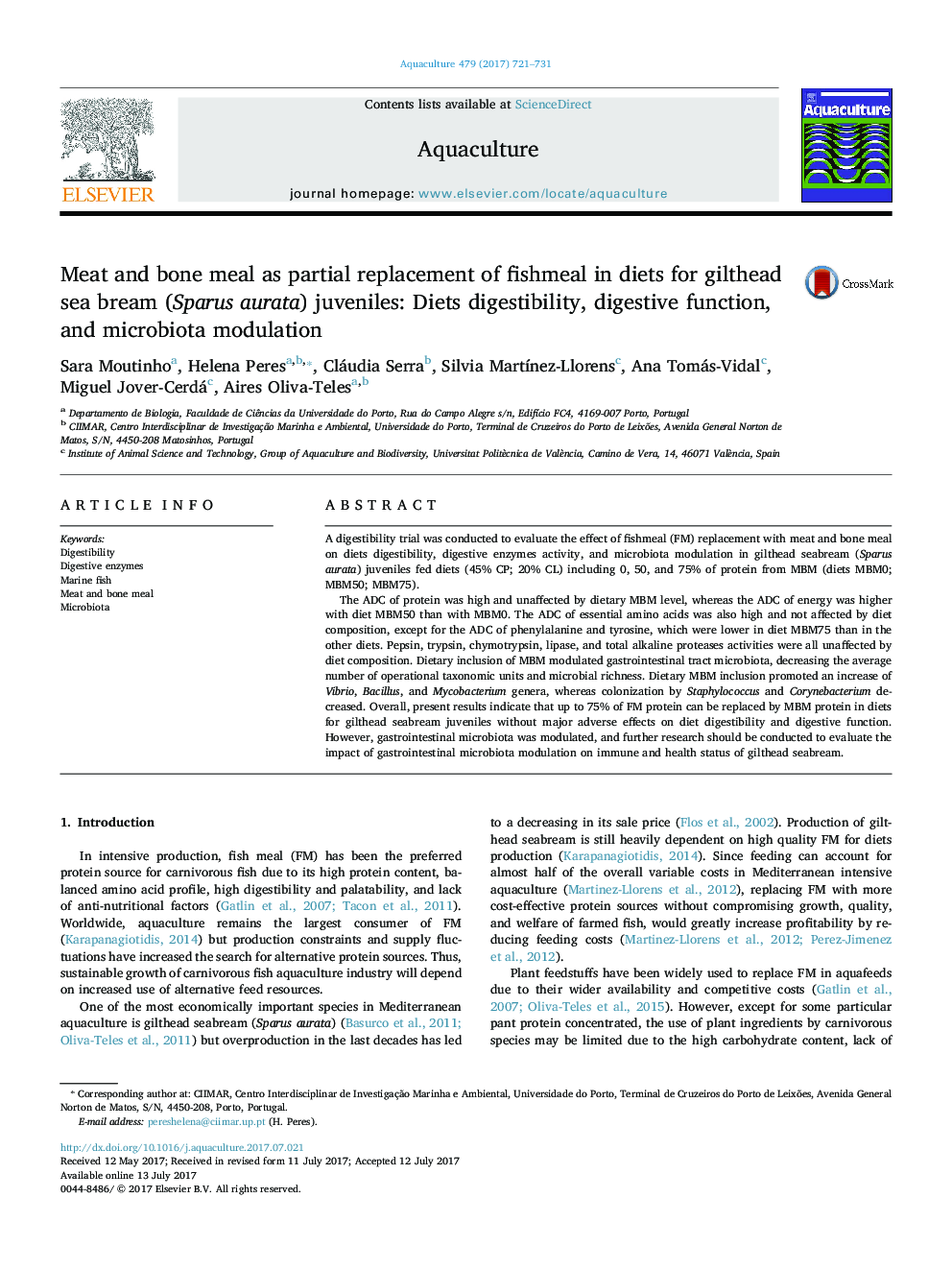| Article ID | Journal | Published Year | Pages | File Type |
|---|---|---|---|---|
| 5539245 | Aquaculture | 2017 | 11 Pages |
Abstract
The ADC of protein was high and unaffected by dietary MBM level, whereas the ADC of energy was higher with diet MBM50 than with MBM0. The ADC of essential amino acids was also high and not affected by diet composition, except for the ADC of phenylalanine and tyrosine, which were lower in diet MBM75 than in the other diets. Pepsin, trypsin, chymotrypsin, lipase, and total alkaline proteases activities were all unaffected by diet composition. Dietary inclusion of MBM modulated gastrointestinal tract microbiota, decreasing the average number of operational taxonomic units and microbial richness. Dietary MBM inclusion promoted an increase of Vibrio, Bacillus, and Mycobacterium genera, whereas colonization by Staphylococcus and Corynebacterium decreased. Overall, present results indicate that up to 75% of FM protein can be replaced by MBM protein in diets for gilthead seabream juveniles without major adverse effects on diet digestibility and digestive function. However, gastrointestinal microbiota was modulated, and further research should be conducted to evaluate the impact of gastrointestinal microbiota modulation on immune and health status of gilthead seabream.
Related Topics
Life Sciences
Agricultural and Biological Sciences
Aquatic Science
Authors
Sara Moutinho, Helena Peres, Cláudia Serra, Silvia MartÃnez-Llorens, Ana Tomás-Vidal, Miguel Jover-Cerdá, Aires Oliva-Teles,
